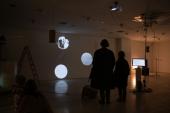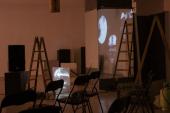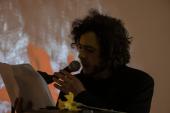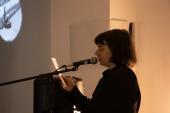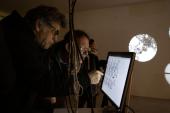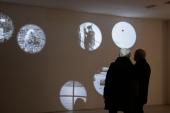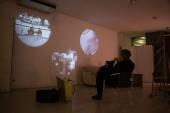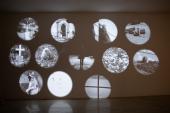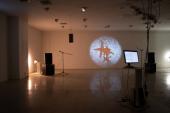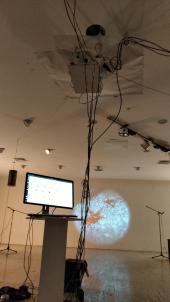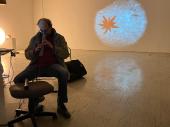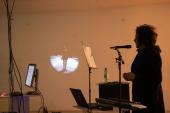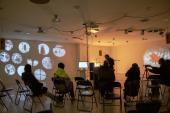|
Artists: Borut Savski, Francisco Tomsich Silent Movies (Borut Savski, F - Summer Songs - Performance (00:11:26)
Silent Movies (Borut Savski, F - SummerSongs - Session 2 (00:07:45) Silent Movies (Borut Savski, F - SummerSongs - Session 3 (00:04:25) Silent Movies (Borut Savski, F - SummerSongs - Session 4 (00:09:16) Silent Movies (Borut Savski, F - Summer Songs - Session 6 (00:06:40) Silent Movies (Borut Savski, F - Summer Songs - Session 7 (00:15:34) Silent Movies (Borut Savski, F - Summer Songs - Session 9 (00:13:13) Silent Movies (Borut Savski, F - SummerSongs - Session 10 (00:04:13) Silent Movies (Borut Savski, F - Summer Songs - Session 11 (00:05:9) Silent Movies (Borut Savski, F - Summer Songs - Concert (00:17:2) |
Summer Songs, the second project of The Silent Movies duo, is an artistic environment comprising a series of sources of visual, sound and verbal information mutually dependent on each other. It functions as an never-ending concert, in which a video installation composed by a series of recent silent films made by Francisco Tomsich provide rough material, red threads and digital data to a sound ecosystem developed through an original software and materialized using specifically-made sound sources (-> vibration loudspeakers) by Borut Savski. It seems that the first project from 2020 entitled Elegy was inspirational enough to lead th participating authors to Summer Songs. Borut Savski – Distributed body: The video-audio system is built in the manner of an anthropomorphic body, which means that it has limbs, a basic body and a neuro-cerebral central part, which also includes the visual perception of video sources. The body with all these organs enters the space in the manner of a machine, which means that the peripheral nervous system is made of the wiring. The visual part of the program drives three main video sources, from where it continuously senses the visual changes in the image. Sensing is performed by the OpenCV (computer vision) programming library in the Python programming environment. The size and position of any significant change in each frame image is converted into a symbolic circle with the coordinates of its position and sent to the audio part of the program that is built in the Puredata environment. This also allows operation within a local wireless network, so that additional video sources can be added to affect the overall sound. The basis of the cerebral function takes place at the level of sound: all the decisions that can be musically called interpretation take place here. All approachings and deviations from musical aesthetics occur as a result of built-in decisions. To a large extent, decisions are arbitrary – stochastic. They take place according to the principle of three sound density groups: diluted/ calm, medium and condensed/ intense, which mainly concerns the components of timing. In this way different sound atmospheres are produced – with the order and density unpredictable. The further design of this sound algorithm will take place during all days of the layout/ installation. The sound sources are sound pieces/ samples that more or less refer to individual images from which they are fed with data. The four output audio channels can work separately, or they can flow from one to another – across the space. An interesting idea is to use a relatively new type of loudspeaker as a sound source – a vibration speaker. Here, the sound is created by transmitting vibrations to any material of much larger dimensions than the vibration lever of the speaker. Our decision was to bend a particularly light wooden panel into the cylinder sleeve and thus achieve uniform sound radiation on all sides of the vertical axis of the cylinder. This is called an omnidirectional speaker. The wooden sleeve has been closed at the bottom and top to create an additional resonant space that amplifies the lower mid frequencies. The sound check results so far are specific, and sometimes even brilliant. Some more information: http://www.ljudmila.org/~savskib/?p=1400&sb=1 Distributed body is the title of the installation/ sound event that Borut Savski performed in December 2005 in the Mali galerija (Moderna galerija) in Ljubljana. in which he first clearly described the anthropomorphic structure of the interactive-generative sound-producing body. His first sound installation project Sound Biotope (1999; Kapelica gallery Ljubljana) – also had this approach. |


